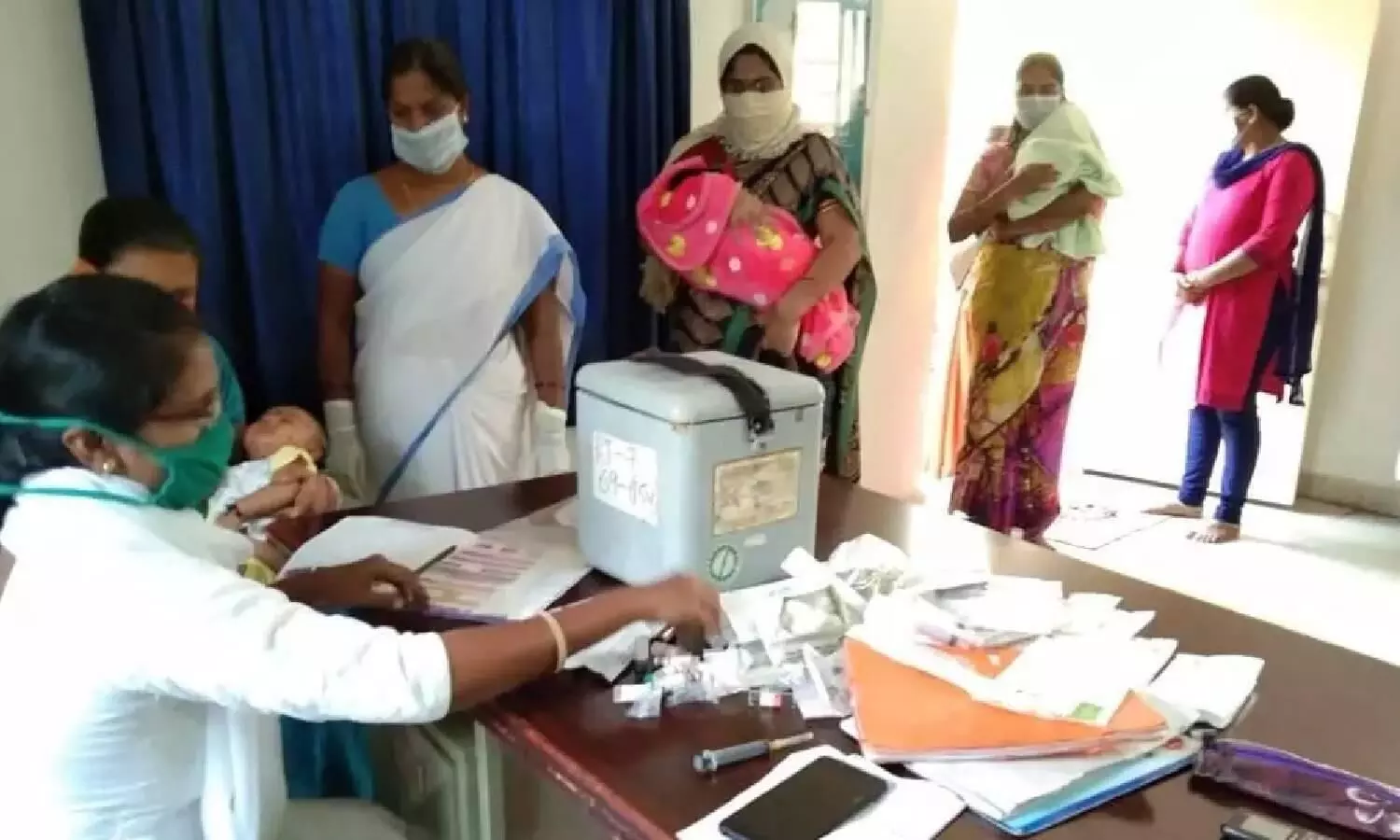NFHS shows rise in anemia among AP children, neonatal mortality rate drops
The 5th National Family Health Survey report was a mixed bag for Andhra Pradesh with several indices showing a fall while many showed an increase.
By Sumit Jha
Hyderabad: The 5th National Family Health Survey report was a mixed bag for Andhra Pradesh with several indices showing a fall while many showed an increase. While the percentage of anemic children increased when compared to 2015-16, the percentage of overweight or obese men and women in the state showed a fall.
The Union health minister, Dr. Harsh Vardhan, released the 5th National Family Health Survey report on 12 December. It contains comprehensive information on population and health and nutrition in 17 states and five Union territories
According to the NHFS report, 63.2 per cent children in Andhra Pradesh between the ages six-59 months are anemic. This is an increase from 2015-16 when the figure was around 58.6 per cent. It also said that 60.1 per cent of the girls between the ages 15-19 years are anemic in the state, a decrease of one per cent from the 2015-16 figure of 61.1.7 per cent. Similarly, 59.0 per cent of non-pregnant women between the ages 15-49 years were found to be anemic while 53.7 per cent of pregnant women in the age group of 15-49 years were anemic.
The number of anemic adolescent men in the age group of 15-19 years increased by three per cent from 18.7 per cent in 2015-16 to 21.4 per cent. Meanwhile, the percentage of anemic men in the age group of 15-49 years has decreased by 11 per cent to 16.2 per cent.
The percentage of children under five years who are stunted decreased by 0.2 per cent to 31.2 from 31.4 per cent, while children under five years who are wasted (weight-for-height) also decreased by one per cent to 16.1 from 17.2 per cent. Children under five years who are severely wasted (weight-for-height) increased by 1.5 per cent to 6.0 from 4.5 per cent and children under five years who are underweight (weight-for-age) also decreased by two per cent to 29.6 from 31.9 per cent. Children under five years who are overweight (weight-for-height) increased by 1.5 per cent to 2.7 from 1.2 per cent.
Obesity and blood pressure
Around 28 per cent of the men in the age group of 15-49 years are either overweight or obese, a three per cent decrease from 2015-16. Meanwhile, 32.6 per cent women in the age group of 15-49 years are either overweight or obese, a decrease of around four per cent from 36.3 per cent in 2015-16.
The ministry of health has included two new categories in the 2019-20 survey - high blood pressure and high sugar level.
The NFHS also found that around 7.1 per cent men above 15 years either have high blood pressure or are taking medicine to control their blood pressure, while 5.8 per cent of women in the state have high blood pressure or are taking medicine to control blood pressure. Also, around 20.5 per cent men and 17.9 per cent women have high blood sugar levels.
Institutional delivery
The percentage of institutional births in hospitals decreased from 96.5 per cent in 2015-16 to 95.7 per cent in 2019-20. Meanwhile, institutional births in public facilities increased by around 12 per cent from 38.3 per cent in 2015-16 to 50.4 per cent.
Cesarean births also saw an increase in 2019-20 from 40.1 per cent in 2015-16 to 42.4 per cent. Around 63 per cent of deliveries in private facilities were cesarean births, an increase of six per cent from 57 per cent in 2015-16, which in public facilities caesarean births was 26.6 per cent in 2019-20 as compared to 25.5 per cent in 2015-16.
Mortality rate
The neonatal mortality rate per 1,000 live births has come down to 19.9 per cent from 23.6 per cent in 2015-16. Also, infant mortality rate dropped four percent from 34.9 per cent to 30.3 per cent while the under-5 mortality rate has come down to 29.4 per cent from 31.5 per cent in 2015-16.
Family planning
Andhra Pradesh also saw an increase in family planning from 69.5 per cent in 2015-16 to 71.1 per cent in 2019-20, though female sterilisation still remained the main method for family planning. Around 69.6 per cent women opted for sterilisation in 2019-20, an increase by around one per cent from 68.3 per cent in 2015-16. The male sterilisation rate saw a negative change of 0.2 per cent from 0.6 per cent in 2015-16 to 0.4 per cent in 2019-20.
The use of pills, IUD, condoms, or injectables are below one per cent in the state.
Apart from health Indices, the living conditions have also changed in the state. Around 77.3 per cent of the population were using improved sanitation facilities in 2019-20 which is an increase of around 23 per cent from 2015-16.
The percentage of women in the age group 20-24 years who married before 18 years has also decreased by around three per cent to 29.3.
There was a jump of 8.3 per cent in child vaccination in the state from 65.3 per cent in 2015-16 to 73 per cent in 2019-20.
The sex ratio of the total population (females per 1,000 males) in the state has increased to 1,045 from 1,021.
The NFHS surveyed 6.1 lakh households and conducted household interviews to collect information on population, health, family planning, and nutrition-related indicators. NFHS-5 fieldwork for Andhra Pradesh was conducted from 2 July 2019 to 14 November 2019 by Sigma Research and Consulting Private Limited. Information was gathered from 11,346 households, 10,975 women, and 1,558 men.